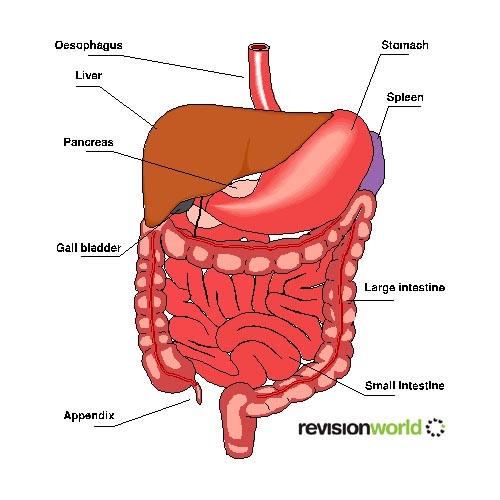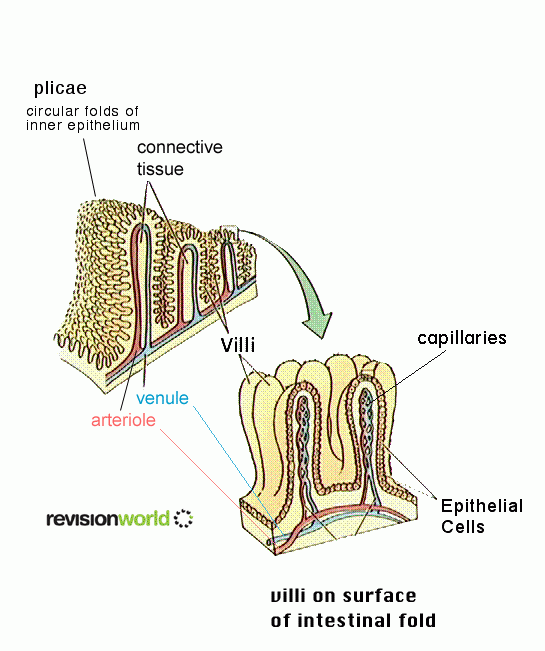KEY POINT - The job of the digestive system is to break down large food molecules. This is called digestion.
Digestion happens in two ways: physical and chemical.
- Physical - digestion occurs in the mouth where the teeth break up the food into smaller pieces. The food we eat needs to be broken down into small pieces which we chew up into even smaller ones before swallowing them. Once the food gets to the stomach the food is broken down further by the stomach's muscular walls.
- Chemical - digestion is caused by digestive enzymes (Enzymes are biological catalysts found in all cells of the body) that are released at various points along the digestive system. Substances which our body needs cannot be absorbed into our blood until they have been broken down further and converted into small soluble chemicals.
Once the food molecules have been digested, they are small enough to diffuse into the bloodstream or lymph vessels. This is called absorption.
Peristalsis is the movement of food through the digestive system by the contractions of two sets of muscles in the walls of the gut. The two sets of muscles produce wave-like contractions enabling food to move down the gut.
Within the stomach the following happens to the foods
- Carbohydrate is turned into glucose, which our bodies need to make energy.
- Protein is turned into amino acids, required for cell growth and repair.
- Fats and oils are turned into fatty acids and glycerol, needed to insulate our bodies and make cell membranes.
- Vitamins and minerals do not have to be digested because they are already small enough to get into our blood.
Digestive System Diagram
The digestive process is as follows:
- 1. Chemical Digestion starts in the mouth through enzymes and saliva. The food is then moved to the stomach
- 2. The Small Intestine receives the food next and produces protease and lipase, food is absorbed into blood, large surface area by villi
- 3. Large Intestine (Colon) is where indigestible food is passed to. Any excess water is absorbed before it is excreted from the anus.

The following also play a part in the process
- The Stomach produces protease, HCl and pummels food with muscular walls
- The Gall Bladder stores bile after its been made by the liver
- The Pancreas produces enzymes: carbohydrase, lipase, protease
Villi
Villi are small projections covering the inside walls of the small instestine. Food products pass into the blood stream through the villi.
Villi are located in the small intestine, and absorb very small molecules into the blood stream. All other molecules (indigestible) are passed into the large intestine.

